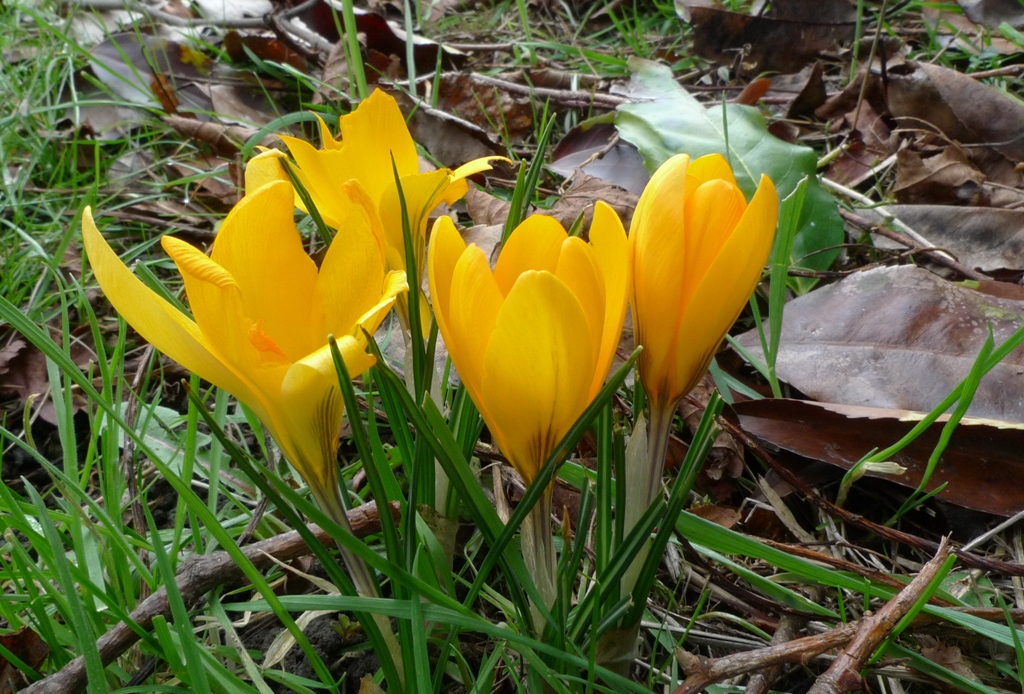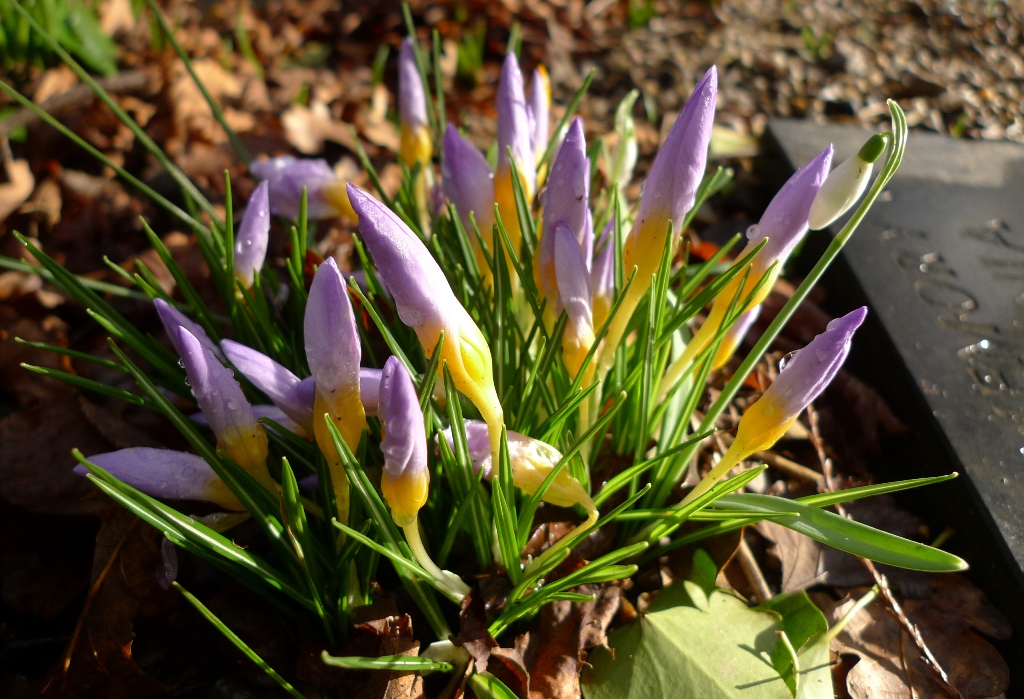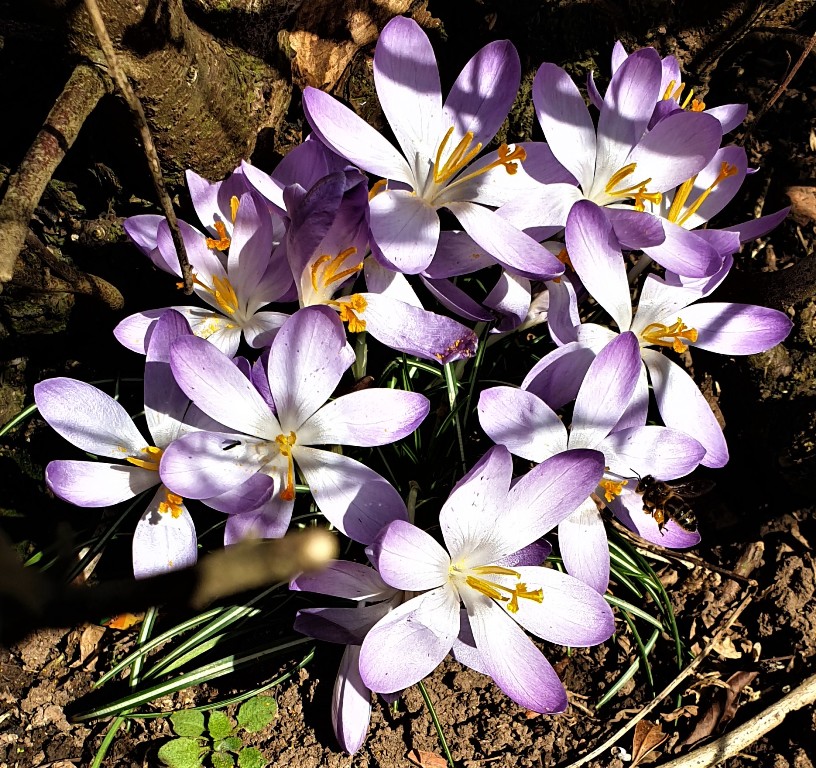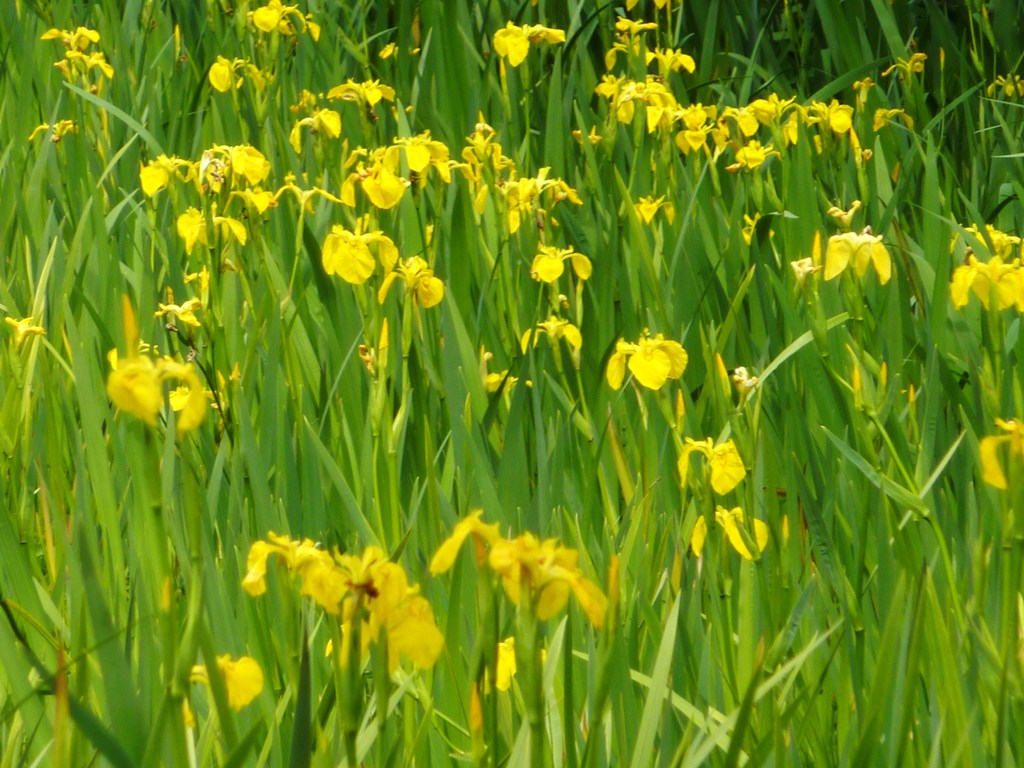
The Iris family or Iridaceae, according to Stace has 15 genera but several genera are clearly escaped garden plants and not yet widely spread in the wild so will mainly mention the real natives and/or the more common introduced ones which are also described in the Wildflower Key.
They are more difficult to identify without flower as of course all have similar, strap-like leaves in various shades of green!
I use colour coding for easy reading! Blue background is general interesting info (although I hope you find it all interesting!!). Green is about all the uses except for medicinal uses or if there is a warning in which case I use a pink background. Pictures by Matt Summers (MS), Mike Poulton (MP) of Ecorecord and Wikipedia Commons
Please use Jump-links in contents to easily get to the various species on next page!
Contents:
Blue-eyed-grass (Sisyrinchium bermudiana)
Yellow Flag (Iris pseudoacorus)
Stinking Iris (Iris foetidissima)
Bearded Iris (Iris x germanica)
Wild Gladiolus (Gladiolus ilyricus)
Eastern Gladiolus (Gladiolus communis ssp. byzantinus)
Montbretia (Crocosmia x crocosmiiflora)
Sand Crocus (Romulea columnea)
Crocuses
Crocus chrysanthus, C. sieboldii and C. tommasinianus
Blue-eyed-grass
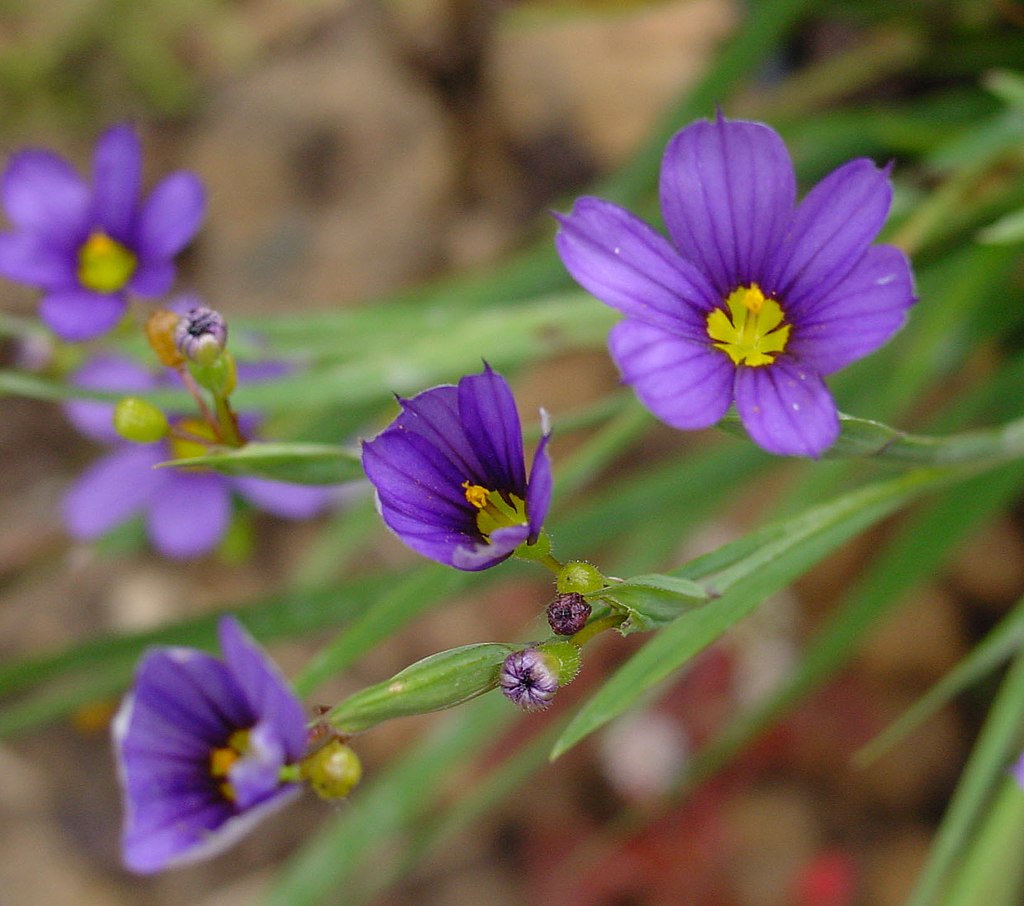
Sisyrinchium bermudiana or Blue-eyed-grass
A perennial herb of wet meadows, ditches and lake-shores.
It came as a surprise to me to hear that this little plant is native in West Ireland but it is even frequently naturalised in Britain. S. bermudiana has been confused tough with S. montanum, which is very similar!

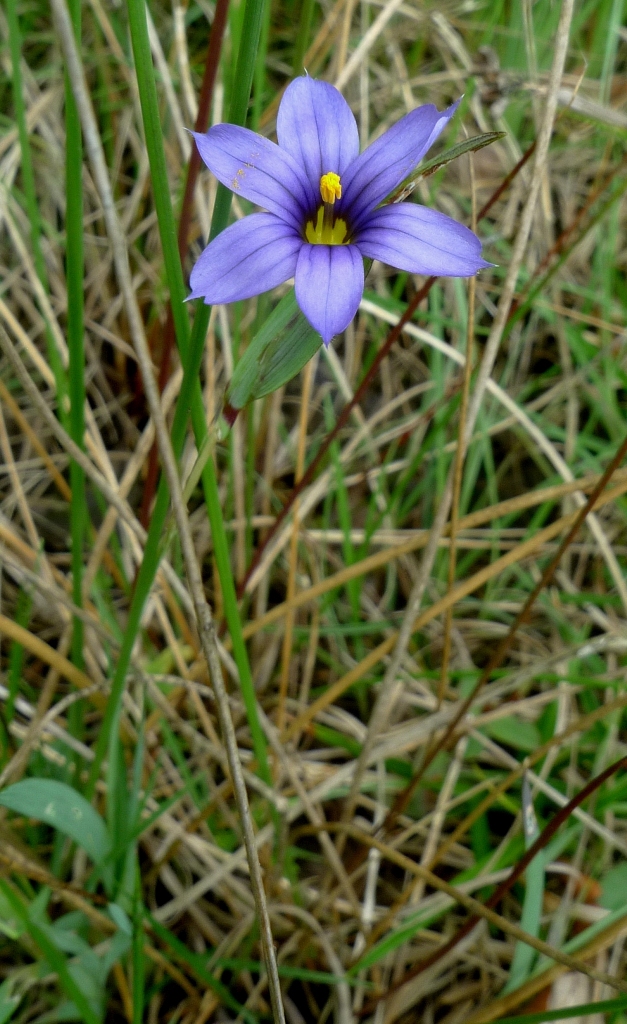
It has been used as a totemic flower by Bermudians, and appears in art, jewellery, banknotes and elsewhere.
Yellow Flag
Iris
Iris is a genus of 260–300species of flowering plants with showy flowers. It takes its name from the Greek word for a rainbow, which is also the name for the Greek goddess of the rainbow, Iris. Stace mentions 14 species but only 2 are truly native:
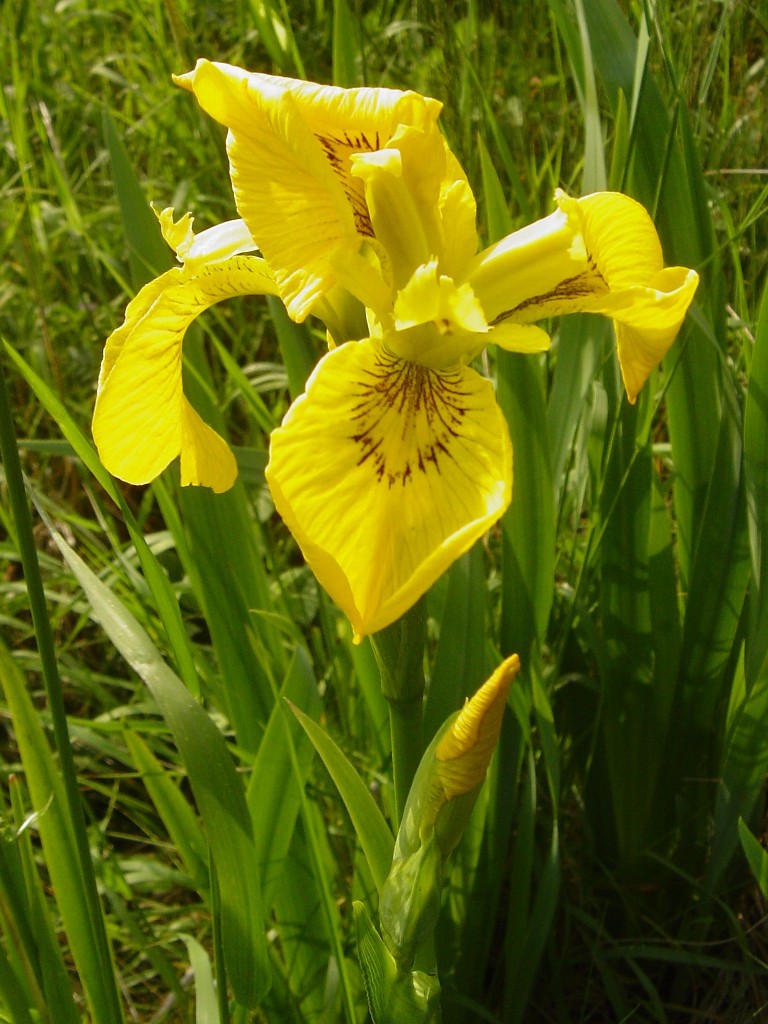
Iris pseudoacorus or Yellow Flag
A rhizomatous perennial herb of wet meadows, wet woods, fens, the margins of lakes, ponds and watercourses, wet dune-slacks, and, in N. and W. Britain, also of coastal streams, shingle, upper saltmarshes and raised beaches. It reproduces by seed and by vegetative spread.
The leaves, and especially the rhizomes, of this species contain an irritating resinous substance called irisin. If ingested this can cause severe gastric disturbances. Plants can cause skin irritations and allergies in some people.
The plant was rated in second place for per day nectar production per flower in a UK plants survey conducted by the AgriLand project, which is supported by the UK Insect Pollinators Initiative. However, when number of flowers per floral unit, flower abundance, and phenology were taken into account, it dropped out of the top 10 for most nectar per unit cover per year, as did all plants that placed in the top ten, with the exception of common comfrey, Symphytum officinale.
Large stands in western Scotland form a very important feeding and breeding habitat for the endangered corncrake.
It is widely planted in temperate regions as an ornamental plant, with several cultivars selected for bog garden planting. The following cultivars have gained the Royal Horticultural Society‘s Award of Garden Merit:
- Roy Davidson’
- ‘Variegata’ (it has leaves that are edged with deep white stripes
The seed is said to make an excellent coffee substitute as long as it is well roasted. Caution is advised, it might be poisonous. (See warning above!)
A slice of the root held against an aching tooth is said to bring immediate relief. Because of its extremely acrid nature it is however best dried as the root loses its acridity and then only acts as an astringent.
- This plant has been used as a form of water treatment since it can take up macronutrients (such as nitrogen and phosphorus) through its roots, and
- is featured in many AS Level Biology practicals as its ability to grow in low pH levels makes it a useful indicator.
- It can also withstand high salinity levels in the water.
- A beautiful yellow dye is obtained from the flowers.
- A good black dye is obtained from the root if it is mixed with iron sulphate. It is brown otherwise.
- The root is a source of tannin and has been used in making ink.
- A delicately scented essential oil, obtained from the roots, has been used to adulterate the oil of Acorus calamus
Stinking Iris
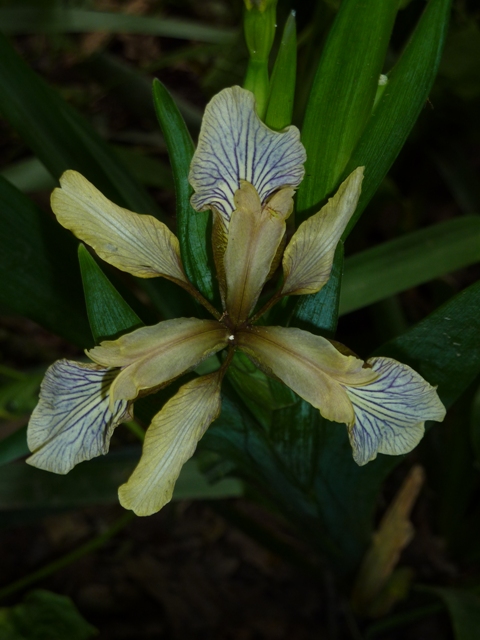
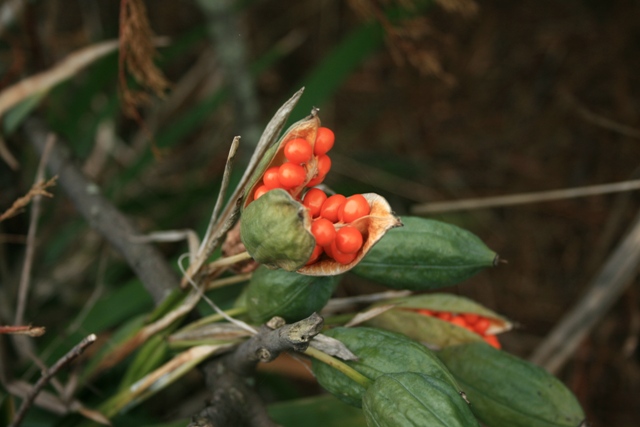
Iris foetidissima or Stinking Iris (also Gladdon, Gladwin iris, Roast-beef Plant, or Stinking Gladwin)
A perennial herb, highly tolerant of drought and shade, found in hedge banks and woods, and on sheltered scrubby sea-cliffs, mostly on calcareous substrates. Reproduction is by seed and by rhizomatous extension.
It is known as “stinking” because some people find the smell of its leaves unpleasant when crushed or bruised, an odour that has been described as “beefy”. Its common names of ‘gladdon’ and ‘gladwyn’ or ‘gladwin’, are in reference to an old word for a sword, (Latin ‘gladius’) due to the shape of the irises leaves.
This plant is cultivated in gardens in the temperate zones. Both the species and its cultivar ‘Variegata’ have gained the Royal Horticultural Society‘s Award of Garden Merit. There is also a yellow variety: Iris foetisissima var. citrina and the long-lasting berries are a bonus throughout the cold months.
It is an attractive evergreen plant for dry shade and members of this genus are rarely if ever troubled by browsing deer or rabbits!
Stinking gladwin has a long history of medicinal use, though it can be rather strong in its action and so is little used nowadays. A decoction of the roots acts as a strong purge, it has also been used as an emmenagogue and for cleaning eruptions. The powdered or infused dried root is beneficial in the treatment of fainting, nervous complaints and to relieve pains and cramps. The plant has been used as a cure for ringworm.
Bearded Iris
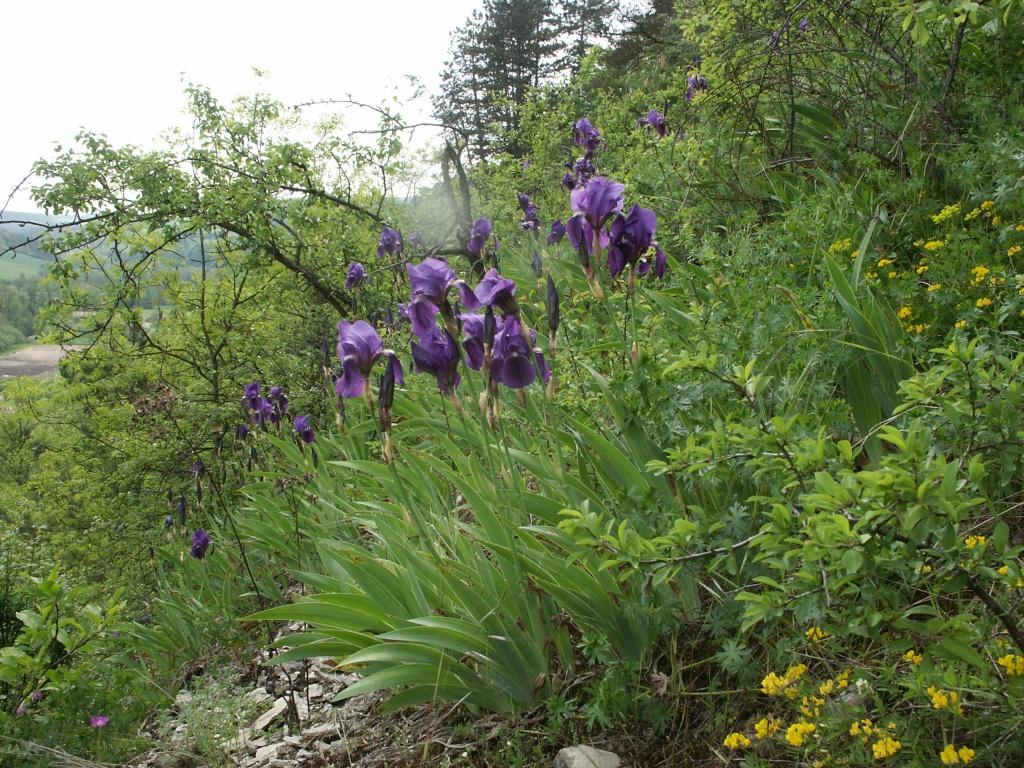
Iris x germanica or Bearded Iris
A rhizomatous perennial herb found in rough and waste ground, on roadsides and railway banks and in derelict gardens. It rarely produces seed in Britain, but spreads vegetatively.
It was first published and described as Iris germanica by Carl Linnaeus in his book ‘Species Plantarum‘ on page 38 in 1753. Although, Kew and many other authorities state that it is a hybrid, so is named as Iris × germanica, with the cross ‘x’ showing its hybrid status.
It is a European hybrid, rather than a true wild species Iris × germanica is considered to have been a natural hybrid between Iris pallida and Iris variegata.
Although I have never encountered this beautiful garden hybrid species in the wild, the Online Atlas shows quite a few areas in the B.I. where it grows and tells us that it has been known in the wild since at least 1905.
It is a plant sold by several nurseries and comes in many colours!
Orris root (rhizoma iridis) is the root of Iris germanica and Iris pallida. It had the common name of Queen Elizabeth Root. Once important in western herbal medicine, it is now used mainly as a fixative and base note in perfumery; it is the most widely used fixative for potpourri. Orris is also an ingredient in many brands of gin.
In the past, sections of the dried root have been given to teething babies to chew on, though this has been discontinued for hygienic reasons.
Wild Gladiolus
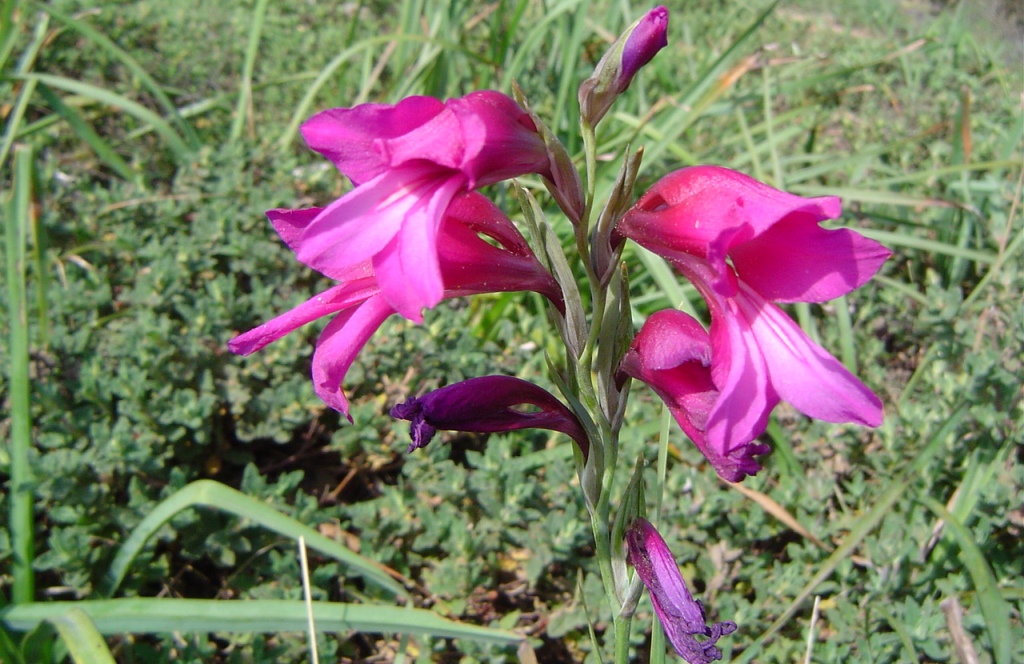
Gladiolus ilyricus or Wild Gladiolus
A rare cormous perennial of acidic, brown-earth soils, found on grass-heaths, usually in association with Pteridium which may afford the plant some protection from grazing.

Eastern Gladiolus
Gladiolus communis ssp. byzantinus or Eastern Gladiolus
A cormous perennial of bulb fields, field margins, roadsides and rough ground. It is naturalised only in lowland areas experiencing very mild winters, as the corm is susceptible to winter frost.
G. communis, introduced from S. Europe by 1596, is usually a persistent relic of cultivation. It was first recorded in the wild in 1862, but its distribution has probably changed little in recent years.
Montbretia
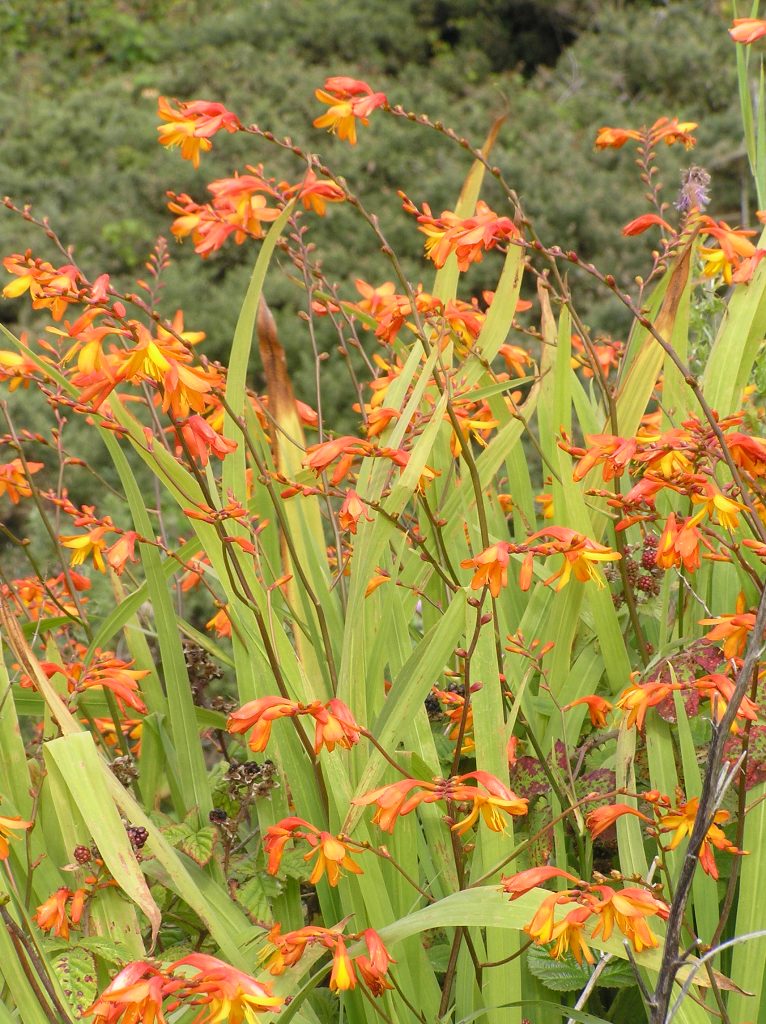
Crocosmia x crocosmiiflora or Montbretia
A cormous neophyte, introduced to Britain in 1880, spreading vegetatively by means of rhizomes to form dense clumps in woods and hedge banks, by roadsides and on waste ground.
It is a garden hybrid of C. aurea and C. pottsii, first bred in 1880 in France by Victor Lemoine.
An attractive but fast growing garden plant and can be invasive!
There are over 150 named cultivars including:
- ‘Babylon’ agm− orange-red with yellow throats
- ‘His Majesty’ − flowers large, orange
- ‘Jackanapes’ − flowers orange-red, inner lobes golden yellow
- ‘Solfatare’ − yellow flowers with bronze foliage
- ‘Star of the East’ agm − light orange with pale centres
Those marked agm have received the Royal Horticultural Society‘s Award of Garden Merit.
One of the parents; C. aurea has yellow dye which is obtained from the flowers and used as a saffron substitute for colouring foods.
Sand Crocus
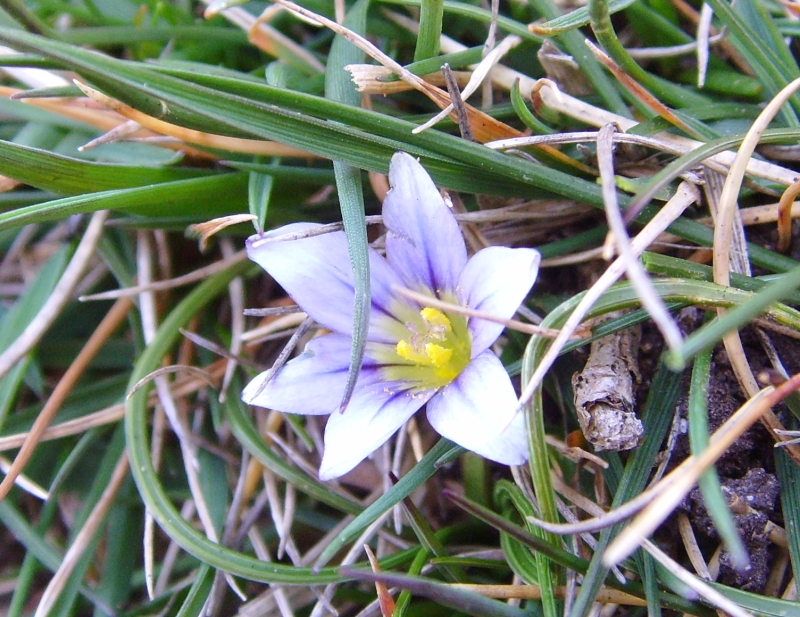
Romulea columnea or Sand Crocus
A rare, cormous perennial herb of short, open turf on freely-draining sandy ground and cliff-slopes near the sea.
A pretty flower which could be grown as an alpine plant from specialist nurseries.
Crocuses
Crocuses
Crocus is a genus of seasonal flowering plants in the family Iridaceae (iris family) comprising about 100 species of perennials growing from corms.
Many species found in the wild or on graveyards have often been planted and naturalized in the B.I. for example:
